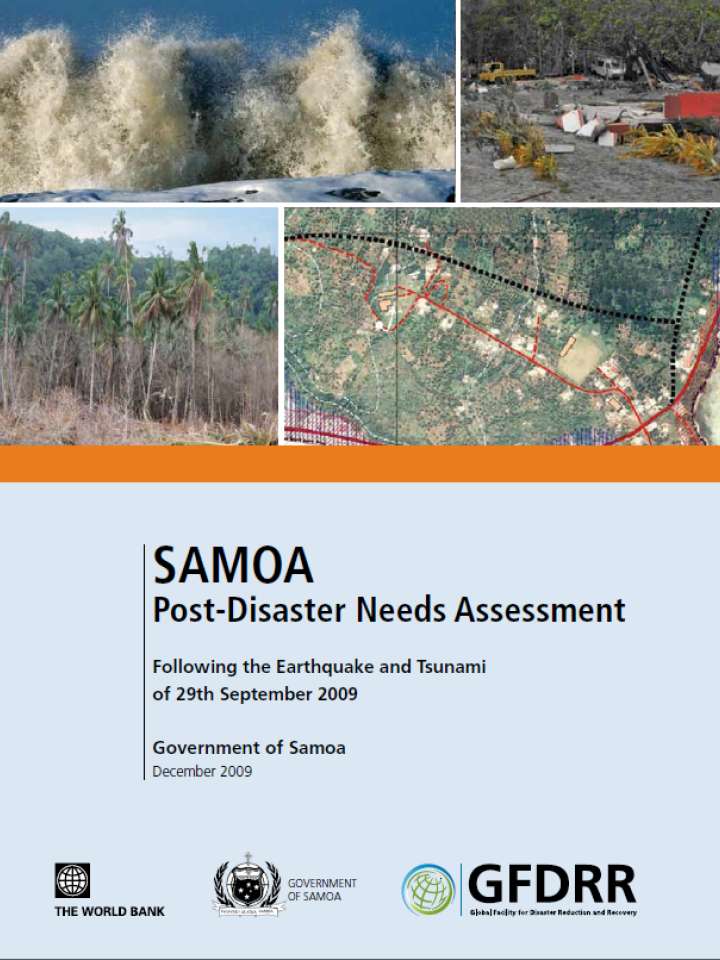Samoa Post-Disaster Needs Assessment Following the Earthquake and Tsunami of 29th September 2009
At 6:48am on the 29 September 2009, a powerful 8.0 magnitude earthquake close to the main Samoan Island chain with its epicenter 190 km south of the Samoan capital of Apia. This was followed only 10 - 20 minutes later by two tsunami waves that impacted American Samoa, The Independent State of Samoa, and the small northern island of Niuatoputapu in the Kingdom of Tonga. The highest swell of the water was reportedly 11m and caused unprecedented fatalities, and serious damage, to the affected Pacific Island countries.
There have been 143 reported deaths and a further 5 missing and 310 seriously injured. An estimated 5,274 people about 1 out of 50 Samoans have been affected, mainly on the southern, eastern and southwestern coast of Upolu Island. The total value of the disaster effects caused by the tsunami in Samoa is estimated at SAT$310.11 million (US$124.04 million). This would be equivalent to more than 22 percent of Samoa’s Gross Domestic Product (GDP). Despite affecting a relatively limited geographic area of the country, the economic impact of the tsunami was considerable especially because of the tourism significance of the affected area and the damage caused to the transport infrastructure by the coast. Of the total disaster effects, an estimated SAT$212 million (US$84.8 million) refers to the value of the destruction or damage to physical assets existing in the affected areas, and an additional SAT$98.16 million (US$39.26 million) represents losses in the flows of the economy that are expected to occur in the country over the next couple of years as a result of the temporary absence of the destroyed assets.
Explore further
